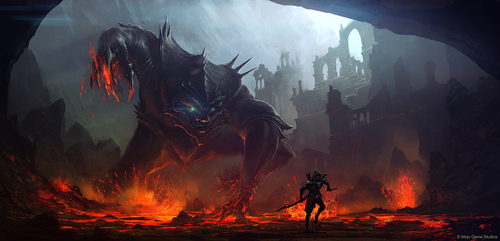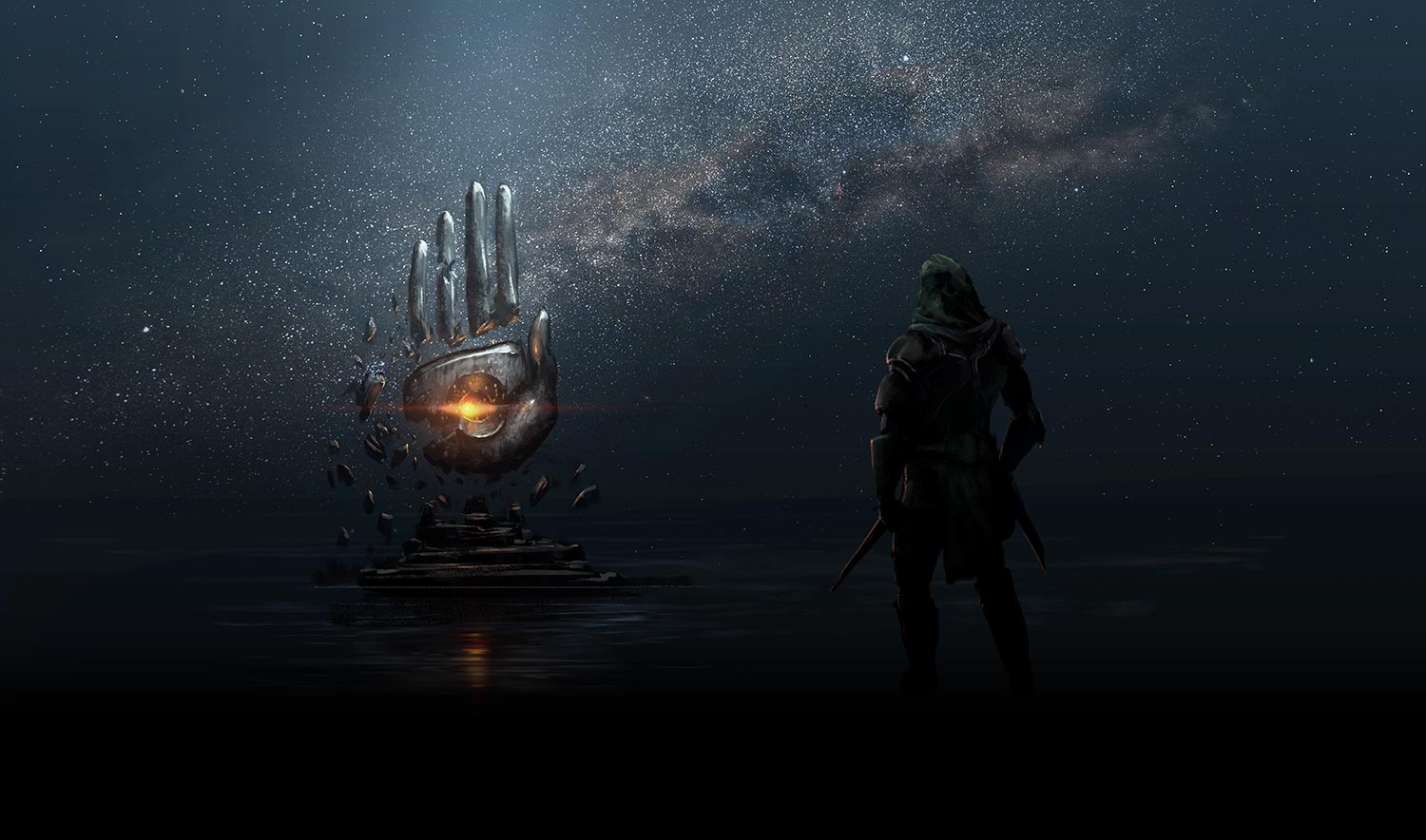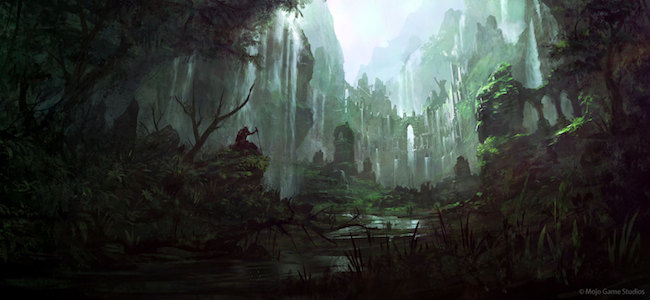
Aderyn’s Cradle is one of those rare examples where an indie developer has gone to great lengths to pursue new innovation and design with only a very small budget. Using the latest technologies, Mojo Game Studios has been able to show that anything is possible when you have a great team from around the world pooling their creative talents and abilities into a singular vision. I managed to get some time with the President of Mojo Game Studios, Hank Zwally, to talk to him about the studios up and coming epic that is currently in its crowd-funding phase:
What made you decide to use Kickstarter as a way to get your game funded?
Hank: We chose to crowdsource in order to avoid having a publisher. This lets us maintain much more creative freedom and keeps the reins in our hands to create the best game we can. One of the best places to crowdsource, currently, is Kickstarter. Our choice was pretty natural given the size and scope of Aderyn’s Cradle, and the fact that no other crowdsourcing site has hosted as many successful large projects as Kickstarter has.
How do you feel being put up against the likes of Fantasy role-playing games such as Skyrim?
Hank: I don’t really view us as being up against them. They’re predecessors, meaning they’ve paved the road to make games like Aderyn’s Cradle, as a first person open-world RPG, something that can be taken to market and be viable. What first person open world RPGs are there, already on the market, besides the Elder Scrolls series?
At the same time, our fantasy is very different from that of other games. We really try to make a realistic fantasy more along the lines of that in The Lord of the Rings, in that it’s a world that the player could imagine our world coming from. We strive to make give a true, believable mysticism to the world, and making it believable rather than using magic in more unpredictable ways or without clear rules and limitations. Our world has a set of ground rules for physics and magic which are adhered to consistently throughout the game.

What inspired Aderyn’s Cradle, and who thought of the name?
Hank: Aderyn’s Cradle was inspired as a response to the lackluster games we believe have become industry standard. All of us at Mojo have played and loved hundreds of games. What we’re really doing, is putting a twist and change on the systems you know and would normally expect. Drawing upon our favorite systems from some of the best games. From Myst and Skyrim to FPS games like Halo, we’re synthesizing traditional RPG and first-person systems in new, different ways that we hope will provide both an incredible and different experience.
How would you explain “Aderyn’s Cradle” to someone unfamiliar with the game?
Hank: Above all else, Aderyn’s Cradle is a story.
When we came together and first decided to take on this project, and make a new kind of video game, we knew we wanted to create something more than a toy. We wanted to give the player a mature, immersive experience. And this fundamental goal goes a long way in influencing our design. To this end, Cradle is first and foremost a game dependent on your skill as a player, not the countless hours put into leveling up your character. Immersion is our top priority, and it governs how we approach almost everything, from combat to narrative to environments. We did this because we want the player to fully engage, heart, mind and skill, with every in-game experience. A big reason Cradle exists is to satisfy the adventurer that exists in all of us as gamers. Nothing should feel random or unnecessary; once you’re in Anora, nothing in-game should push you back out to reality.
What has been the greatest challenge since you began working on “Aderyn’s Cradle”?
Hank: Working with a globally distributed team across multiple timezones with various hours of work and commitment levels. Mojo’s business structure is flexible and allows for a variety of methods of work. This is fantastic for allowing us to have a team of passionate and talented individuals, but it’s extremely difficult to coordinate and manage. Achieving the efficiency of localized teams with globally distributed members has never been done before. It’s still an unsolved problem in software engineering and development, which we choose to tackle head-on.

Have there been any ideas or mechanics that you wanted to include in the game, but have had to be cut during development?
Hank: Absolutely; this is the nature of game development. If a developer says they haven’t cut anything, they’re either lying to you, or have never released a full game. One example of a mechanic for Aderyn’s Cradle which we’ve had to cut is a robust and full crafting system outside of just Medica which would be a more utility-based crafting system.
What made you decide to use Cryengine as your graphical engine?
Hank: Our decision to use CryEngine is grounded in the idea of capturing the beauty of the natural world, and using it to evoke wanderlust and thirst for adventure in our players. To do this, we wanted the most graphically advanced solution available. CryEngine also allows us to create seamless open worlds using voxel terrain sculpting. Albeit a challenge to work with, CryEngine has indeed been sufficient for our needs after the additions made by our programming team.
The combat mechanics are quite unique! What was the process for designing such a system?
Hank: To be clear, our combat encompasses much more than melee, including ranged and magic attacks. However, since melee is integral to all classes in Cradle regardless of whether or not they use other attacks additionally, we will focus on melee for our discussion here. The primary goal was always to make a system where player agency is at the heart of gameplay; where your choices are the only things that determine whether you succeed in battle. For this to be successful, we had to create an intuitive and easy to learn system, which still has a depth of skill and strategic depth that makes it a challenge to master. We wanted to bring the same fast-paced skill to combat seen in MLG games, like Halo, to the first-person melee/fantasy setting.
Following these goals, as Lead Combat Designer, I began the design process by analyzing and understanding combat to the best of my ability. I’ve personally spent at least 100 hours studying various styles of combat, such as third staff fighting, quarter staff fighting (specifically European and Asian quarter staff fighting styles and Celtic third staff fighting styles). All these hours of research led to the realization: certain attack moves make sense when you, as a fighter, are aiming at certain parts of an enemy’s body, while others don’t. From this realization, for every different weapon in Aderyn’s Cradle, we have researched and specifically found the moves that make sense for each body part for each weapon and we have meticulously mapped those moves into game for each of our weapons.
Outside of just melee combat, though, we’ve gone through hundreds of iterations of design to bring the most intuitive, skillful, and fluid combat system we can.
The weapon and armour augment system are also unique. Could you tell us more about it?
Hank: Our design comes from the want to do away with arbitrary game progression; progression that relies on time spent in-game or grinding out kills or other tasks for experience in order to level. We wanted to make progression something that was about your skills and ability to experience and explore the game. No goal in Aderyn’s Cradle is ever blocked by the obstacles of repetitive action or kills. After setting out with this goal, we needed to create a system that would give players both the depth and progression of leveling only through having them explore the world and upgrade their items. We looked at all of the armor and weapon systems in games that we love and from these synthesized something new.
Can you share something with us as an exclusive first to GameCloud? Maybe a gameplay mechanic or something about the game that has yet to be announced?
Hank: Certainly! One combat mechanism we haven’t showcased yet is called “Force of Will”. Essentially, Force of Will is a way to integrate the dynamically changing thrill of combat with the player’s emotional response. Since absorbing part of Aderyn’s Soulfire, the exiled traveler you play as becomes a stronger warrior than any has been in ages. Depending on the character class chosen, the character is driven by a different purpose in battle. As they fulfill that purpose, they become increasingly powerful, until they transform into a fiercer form for a time, gaining power. At the moment of this transformation, the player should feel all powerful, like an unmatched force on the battlefield.
Finally, when will our readers be able to go hands on with the game?
Hank: Aderyn’s Cradle will be released on all platforms in Summer 2016
Aderyn’s Cradle is a project surging with potential, so I would urge you to help support the current crowd-funding goal. You can pledge on their Kickstarter page – they have just under a week left to make this game a reality!












